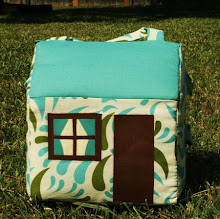The Montessori Geometric Insets are really a gem, in my eyes.
If you don't believe me hear it from the woman herself:
‘These drawings perfect a child’s skill in that they oblige him to draw lines of different lengths and make him ever more skillful and sure in the use of this hands… I do not believe that any means could be found more efficacious in gaining such a victory in less time and which could afford so much amusement to a child. " Discovery of the Child, Maria Montessori
What are they?
10 geometric shapes in plastic or metal. They each have a frame, like individual puzzles.

What is the learning objective?
- To teach differences in shapes
- To develop the child’s muscles for holding a pencil correctly.
- To develop control and precision of movement with flexibility.
-Indirect preparation for art development of pattern and use of colour.
You can buy these Insets made of metal or plastic or you can make them on your own for much cheaper using heavy duty poster board. I bought a plastic set on Ebay for a great deal (Ebay is GREAT for Montessori deals!) since I wanted mine to last through many children.
Part 1
This exercise is very simple and I believe can be done with a very young child:
1. Using one shape at a time, take inset and frame to the child's table and remove inset from frame.
2. Going clockwise, trace with the index finger the outside of the inset and the outline of the frame's inside edge. (this is a great exercise for refinement of small motor skills and concentration)

3. Tell the child, " This is a circle," etc.
4. Ask the child to point out objects in the room that are circles
5. Proceed in this manner with the remaining geometric shapes, using Step 1 to 4 for each, as well as using the three period lesson.
6. Show the child how each inset fits into its own frame.
7. Finally present the full tray of insets and frames, remove all the insets, and have the child replace them.
Control of Error: Insets will fit only in their correct frame.

In the book Teaching Montessori in the Home, the Pre-School Years (great book and investment!) the author suggests that the ages for this activity is from 2 1/2 - 5. However I believe a child of MUCH younger could accomplish this Part 1 activity of the Geometric Insets.
Part 2 of the Geometric insets gets a little more challenging and fun....I just started it with my own daughter so I will be writing a post on it soon.
Enjoy!


























